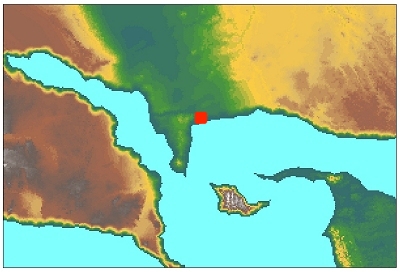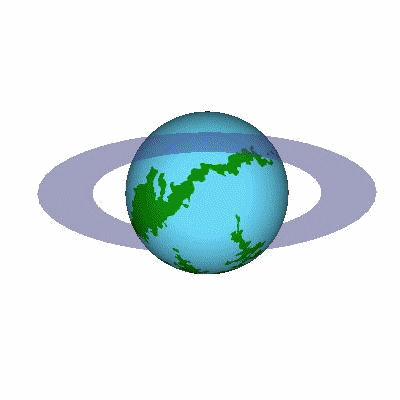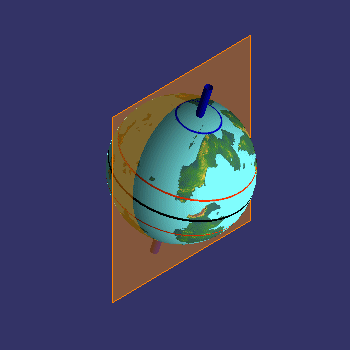


|
You may wondering what would happen if the tilt of a planet's axis would be markedly different than those of Earth or Furaha. If there would be no tilt, there would be no seasons due to no tilt, but if the tilt is much bigger, say like the 43 degrees of the inner cinder Mkaa, you get a result as shown here. Seen from the sun during a year the planet appears to wobble drunkenly in its orbit, and the polar and tropical regions are so large that they nearly touch one another. There are vast regions where it is light for half a year, and others where it is at the same time dark all day long. For Mkaa it matters little: even with a more 'normal' tilt it would still be hot enough to vaporise any life. |
|
The rings of Ilo 1 Another matter than can complicate light and dark on a planetary surface are rings. No planet has rings in Jua's system, so we have to look elsewhere. An excellent example is the planet Ilo, known from the French 'bande dessinée' 'Le Cycle de Cyann' by Bourgeon and Lacroix. See the following blog entries: On the bande dessinée and the life forms in it Again, this is a view from the sun as the planet goes trhough its orbit. Ilo has an axial tilt of about 21 degrees, so in the course of a year it will appears to wobble through its orbit. The rings lie in the planet's equatorial plane, so they wobble along as well. At a solstice the rings present their surface to the sun to the largest degree, whereas they are seen exactly edge on at the equinoxes. Nothing unexpected here, if you think enough about it. Normally rings are not translucent, but they have been depicted that way here for a reason; please read on... |

|

|
The rings of Ilo 2 Once more you can see how the shape of the line dividing light and dark changes in the course of a year. A new factor here are the rings' shadows, already shown above. That animation showed the planet as seen from the sun, so the areas behind the rings are in their shadow. The rings were made transparent to make the areas in their shadow visible. Note that the rings cast their shadow on that half of the planet where the pole is tilted away from the sun. In that hemisphere it is winter, so the days are made even shorter by the shadows of the rings. At some latitudes there will be only be a bit of light in the morning, another bit at noon, and once again a bit at dusk. Note that all this was worked out by Bourgeon and Lacroix; I merely turned their thoughts into animations). |